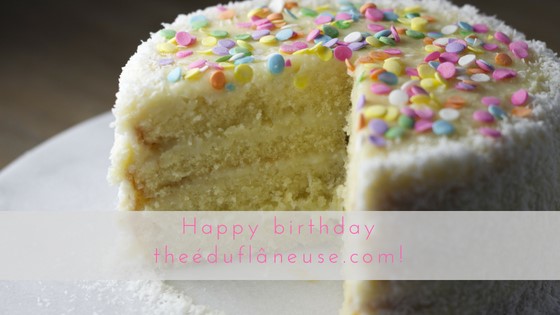
I began this blog four years ago, on 23 August 2014. On reflection (thank you, WordPress stats), my five most-read blog posts of the last four years are as follows:
- What I now know about the doctorate: Illuminating the PhDarkness (2015)
- Can and should teachers be (viewed as) researchers? (2015)
- Doing PhD revisions: The last thesis embrace (2016)
- The Research Lead Down Under (2017)
- Evidence for Learning in Australia (2017)
Over the last four years my blogging has ebbed and flowed. I began writing monthly, increased that to fortnightly and then weekly for some time, and have this year given myself permission to blog more sporadically, in between work, family life and some bigger projects I am undertaking, such as co-editing the imminent Flip the System Australia book. Perhaps that’s why no 2018 posts have made it into my top 5: slower blog productivity.
But my blog isn’t about readership. It isn’t even about me. It’s about being part of the global education hive mind in which we—educators and the education world—are better together. We are better because we propel one another, better because we connect with one another, and better because we challenge one another. Blogging is one way to engage in the networked web of knowledge and thinking in education. It is a way to reach out from our familiar daily contexts to find out what’s happening in the rest of the country and the world.
I began this blog for the purpose of documenting one professional trip. I continued blogging because of what it gave me: a space to explore my thinking and to connect with others around topics about which I am passionate and in which I am immersed. I have connected with teachers, educators, parents and scholars from around the world thanks to this blog. These interactions have enriched and influenced my thinking.
My first blog post, about my then-upcoming travelling fellowship to New York, opened with this quote from Andy Hargreaves and Dennis Shirley’s 2009 book The Fourth Way: The Inspiring Future of Educational Change:
It’s time to bring the magic and wonder back into teaching. It’s time to recover the missionary spirit and deep moral purpose of engaging and inspiring all our students. It’s time to put down the spreadsheets and look to each other and elsewhere for how to get beyond the present turning point so we can transform our society and our schools.
This quote still resonates with me four years on (which even then was five years on from when Hargreaves and Shirley’s book was published). It resonates because education continues to become more corporatised and more data obsessed. (Just look at Gonski 2.0’s observation that schools are gaming ATAR data, its recommendation that teachers have more data at their fingertips, and its proposed formative assessment tool to track student growth and progress). Buzzwords abound, thrown around often without a clear understanding of what they mean. ‘The research says’ is often an empty phrase used to justify the twists and turns of education directions. Teacher and school leader workloads continue to increase and student wellbeing is an ongoing concern. Relentless silver bullets, promising answers to education ‘problems’, are fired from think tanks, politicians and the media. The fast cycle of education policy, blame, and distrust presses in on a profession who often feel bruised and marginalised by the system in which they work.
Do educators need to be informed by a range of data and evidence? Yes. Should we to aim to continuously improve our practice and the learning of the students in our care? Yes. But we also need to be present with one another and with our students. To close our emails, step away from our spreadsheets, and look each other in the eye. To notice one another. To connect with the individuals within our communities, and with why we teach. To stop sometimes and celebrate what we’ve achieved or how we’ve grown. To be teachers energised by the difference we are making, not teacher-mice on perpetually-turning wheels of marking, data analysis and evaluation, who are always racing but never arriving.
So, as I look back to my maiden blog post, I think that we still need to remember our moral purpose as educators: education for the good of each individual and for the greater good.



















